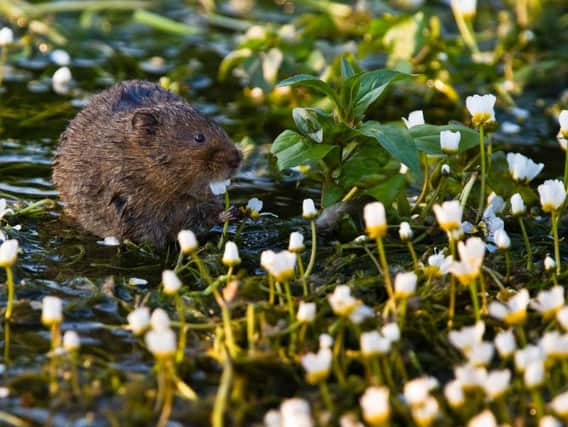Water vole numbers in freefall


They are currently Britain’s fastest declining mammal with numbers dropping by nearly 90 percent in the last 20 years.
Known for its chestnut brown coat, round nose and furry tail, many will be familiar with the animal for its appearance in Kenneth Grahame’s novel, Wind in the Willows as the character, Ratty.
Advertisement
Hide AdAdvertisement
Hide AdBerks Bucks and Oxon Wildlife Trust (BBOWT) have launched an urgent appeal to help save the water vole, yellowhammer birds and red helleborines, a rare woodland orchid. .
BBOTW’s conservation work is helping water vole populations recover locally but they say more work must be done so the vole can thrive and stay safe for the future.
In the 1950’s and 1960s changes in river engineering practices and agricultural intensification caused the watervole population to decline. These changes resulted in habitat loss and degradation which caused fragmentation and isolation of water vole populations.
BBOTW is attempting to raise £50,000 to look after the species and habitats in which they live. Their campaign currently stands on £24,740.54
Advertisement
Hide AdAdvertisement
Hide AdVoles have been affected in the Wendover Arm Canal as they are hunted by the American Mink.
Wendy Tobitt from the BBOWT said: “With some good habitat remaining on the Wendover Canal for Voles I would seem that mink are the likely cause of their demise. Several years ago BBOWT initiated a programme of mink monitoring and control on the canal in conjunction with the Canal and River Trust (CRT) in the hopes that Voles would return.
In 1998 BBWOT set up the first water Vole recovery project in England, and it is still the longest running project, 125km of waterways are surveyed for water voles every year by around 50 trained volunteers.
The current appeal for wildlife at risk offers donors the opportunity to support the BBOWT’s work. £100 could pay for surveying 500 meters of river, which could support up to six breeding water voles.
Advertisement
Hide AdAdvertisement
Hide Ad“Sadly the canal and river trust are no longer able to fund a contractor to trap and dispatch mink when signs are detected. I would encourage anybody who sees a mink to report their sighting to the CRT.”
The American mink is a non-native species which escaped from fur farms around 70 years ago. They are cited as one of the main causes of the dramatic decline in national water vole populations as females are small enough to fit into burows, often wiping out entire water vole colonies. They are one of the few animals known to hunt for fun, as well as for substance.
To donate to the wildlife trust in this area, visit bbowt.org.uk